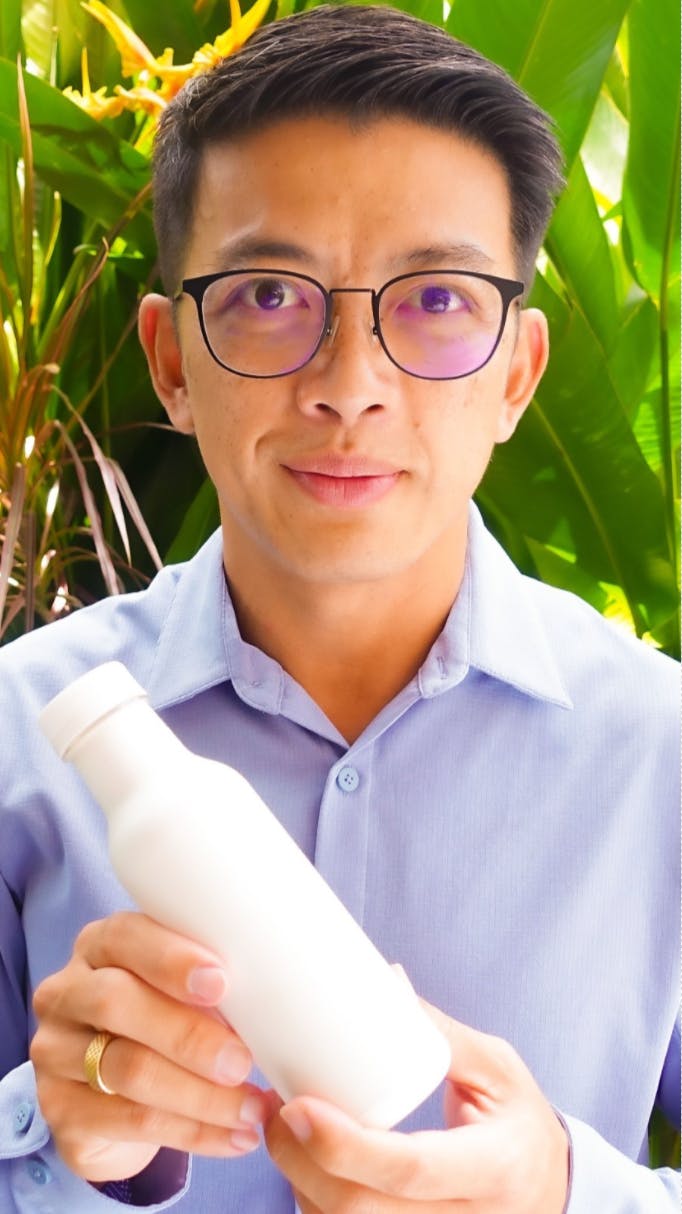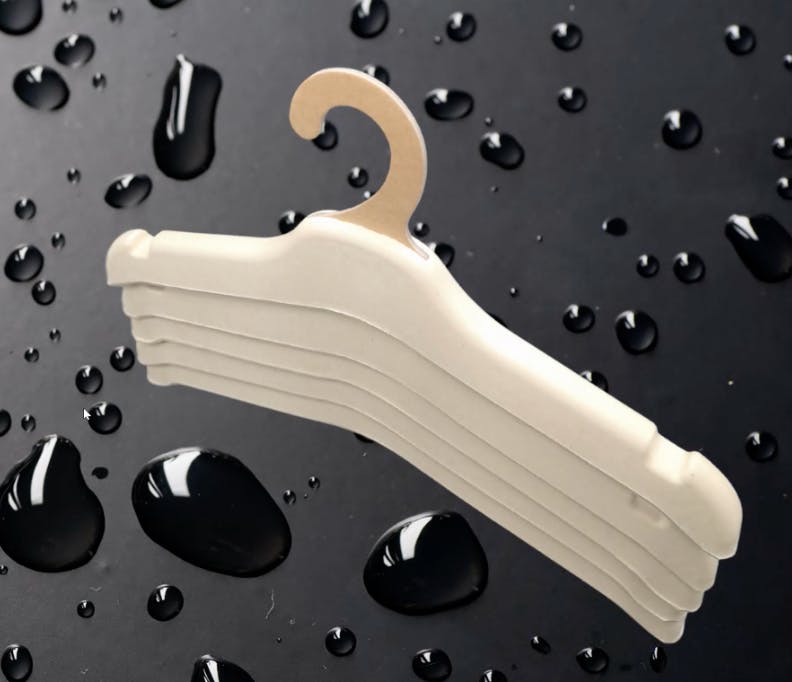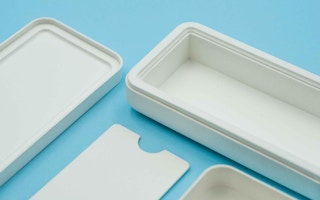It was restrictions on shipping furniture to Europe using Styrofoam — a lightweight plastic foam that is notoriously bad for the environment — that inspired Alvin Lim to pivot to sustainable packaging in the mid-2000s.
“It was 2005, a time when outsourcing was sexy. I had multiple businesses, and one of them was producing furniture for the gaming industry. I was told that I couldn’t use Styrofoam to ship to Europe, or there would be tariffs. That led me to explore alternatives,” says the Singaporean entrepreneur, who went on to launch RyPax, a company that makes recyclable, biodegradable moulded fibre packaging from a blend of bamboo and sugarcane.

Alvin Lim, chief executive of RyPax
His first big move was to convert the Napa Valley wine industry from Styrofoam to moulded fibre in the United States. At the height of the wine club craze, RyPax shipped 67 40-feet high containers of wine shippers to wine producers. “The wine industry wanted to get out of Styrofoam — they never liked it. We gave them a classy, environmentally-friendly alternative,” says Lim.
The real breakthrough for his business came at Pack Expo, a packaging convention in Las Vegas. “We attracted a lot of interest, but there was one gentleman who spent 15 minutes at our booth inspecting our products. I was busy with another customer, so he slid his card on our desk, said ‘call me next week’ and walked away,” recalls Lim.
That interested customer would ultimately become RyPax’s flagship client.
A large, well-known consumer electronics brand known for its sleek design and intuitive products became a mirror image of RyPax’s own culture and approach to sustainability. Just as RyPax helped the client move out of plastic and into moulded fibre, the client inspired RyPax to switch to renewable energy to power its operations. As well as investing US$5 million to put solar panels on the roofs of its factories, RyPax has invested US$1 million in a wastewater system.
In this interview, Lim talks about innovation in packaging design, the weak links in the circular economy in Asia, and what will persuade consumers to pay more for sustainable packaging.
Which innovations in sustainable packaging design excite you the most at the moment?

A moulded fibre champagne bottle cover by James Cropper. it’s lighter and uses less material. Image: James Cropper
A good example is a moulded fibre sleeve for bottles. Our strategic partner, James Cropper, produces a luxurious champagne bottle sleeve that is 100 per cent sustainable. The design reduces the carbon footprint of the packaging; you save on space, it’s lighter, you use less material, and you don’t need an expensive exterior box.
Another example is the paper drinking bottle. A competitor has produced one using two pieces of paper stuck together with a lot of hot glue (so it’s really hard to separate) over a plastic lining.
There are challenges with paper bottles too. Is it commercially viable and ready for mass production? RyPax has taken up the challenge to address these issues. We have broken it down in phases. Firstly, we are working on a bladder system which uses either an aluminum or a thin plastic bottle that can be easily removed. We know that this is a not a viable long-term option, and so the next step that we are taking is to create a mono-material for the bottle body with a sustainable coating to hold the liquid in. Lastly, our company is working towards a goal of eliminating plastics completely, which spurred us to innovate a moulded fibre screw-top option that would be revolutionary.
There are good ideas emerging in the industry, but a key issue is shared knowledge. Yes, corporate profits and competitor advantage are important, but the sooner good ideas can be shared the better. We need to look at the bigger picture. Once paper bottles a feasible at scale, a huge amount of plastic can be removed from the system.
Will sustainable packaging always be more expensive than single-use plastic packaging?
There is an inherent difference in properties between plastics and sustainable materials harvested from nature. As such, in certain applications, sustainable materials are still more expensive than plastics. However, technology and advancement in machinery are fast evolving, resulting in cost efficiencies for mass-produced sustainable materials and packaging.
Furthermore, governments across the globe are introducing tariffs on plastic use, which in turn will spur more companies to convert to a more sustainable approach, that may result in an overall cost reductions.
Most sustainable materials are harvested from nature, and do not have the properties of plastics or metals. As such, in certain applications, sustainable materials are still more expensive than plastic. But technology is fast evolving, and may result in cost reductions for mass-produced sustainable materials. And if tariffs are placed on plastic, as a way to control plastic pollution, that could result in companies switching to more sustainable materials.
Recycled plastic is always going to be more expensive than virgin plastic, because of the cost of retrieving, processing and recycling it. In some applications, recycled paper may be more expensive than recycled plastic. Price parity may come when sustainable materials can scale, or when customers are willing to accept changes in design, because it’s more environmentally friendly.
What will persuade people to pay more for sustainable packaging?
It starts with education. If consumers are more aware of the damage that plastics cause the planet, they would be more inclined to help pay the cost of creating a circular economy.
Do you think that consumers are getting over the taboo of buying products made of recycled materials?
I think the big brands like Nike and Adidas are forcing the issue by using recycled material in their packaging and products. The intention is for it to look recycled with its mashed up designs speckled in various colours. Our partner, James Cropper, is upcycling takeaway coffee cups into luxury packaging, recycled bags and greetings cards. Now, there’s a big push for ocean plastic. Logitech has just announced an ocean plastic optical computer mouse. Once companies go down that route and recycled content becomes more accepted, then it’s just a matter of aesthetics. Some companies want a rough, unfinished, more natural look, some want a more premium look and feel. There is an increase in consumer demand for sustainable packaging or products and they are willing to pay for it.
Which plastic products can be replaced with moulded fibre?

Clothes hangers made from moulded fibre. Image: RyPax
Another product that needs a design overhaul is clothes hangers. Why must they be made of plastic? RyPax is working on a moulded fibre clothes hanger to further eliminate single use plastics. Another is cosmetics, which are a major cause of single-use plastic pollution. Some components of lipsticks, such as the twist mechanism may need to remain plastic, but why can’t the rest be moulded fibre?
The packaging industry is growing rapidly, but is the waste management instructure in Asia developed enough to cope with this growth and bring about a circular economy?
No. It’s a big problem, which was laid bare when China stopped accepting waste material imports [in 2017]. That sent the price of raw materials through the roof. Recycled material prices shot up too. Economies of a certain size and maturity were able to cope, because they had recycled waste streams already in place. But most countries were unprepared, and they needed to look to other countries to process their waste. Take Singapore, for example. It lacks the infrastructure and industry to process recycled materials. So it was exported to countries like Indonesia, Vietnam, and Malaysia. These countries are not set up to process extra waste.
What is holding back the circular economy in Asia?
Infrastructure needs to change, and that will take time, investment and regulatory support. For example, for Singapore to develop a circular economy, it needs consumer buy-in, corporate willingness, and government support for industries that are moving towards more sustainable solutions.
“
What consumers will need to accept is that there will be a transition period for trying out hybrid solutions that won’t be perfect initially. That’s how innovation works.
What does the future of sustainable materials look like?
To reduce the need to ship raw materials, we need to look at local or indigenous alternatives, such as locally produced crop waste. Examples of this include sugar mills, which are a good source of sustainable fibre, as are palm oil mills. Currently, waste from these mills is often burned. RyPax chooses to use bamboo and bagasse, which are the indigenous options available where our facilities are located. They are fast-growing fibres that can be harvested several times a year, they sequester carbon faster than almost any other plant, and they can thrive on degraded land. Together with our partners globally, we are working on R&D to identify the most sustainable feedstock for our innovations.
What does the future of packaging look like to you? Isn’t the most sustainable packaging no packaging at all?
If there is no need to ship a product anywhere, then you can remove the packaging completely. But that’s just not realistic. Without packaging, the product will not be protected, and the brand will have one less platform to use for messaging or branding. Companies will start off by reducing packaging where possible. In some industries there is no choice but to use some plastic. What consumers will need to accept is that there will be a transition period for trying out hybrid solutions that won’t be perfect initially. That’s how innovation works. We shouldn’t wait until a solution is 100 per cent perfect to try new things out.















